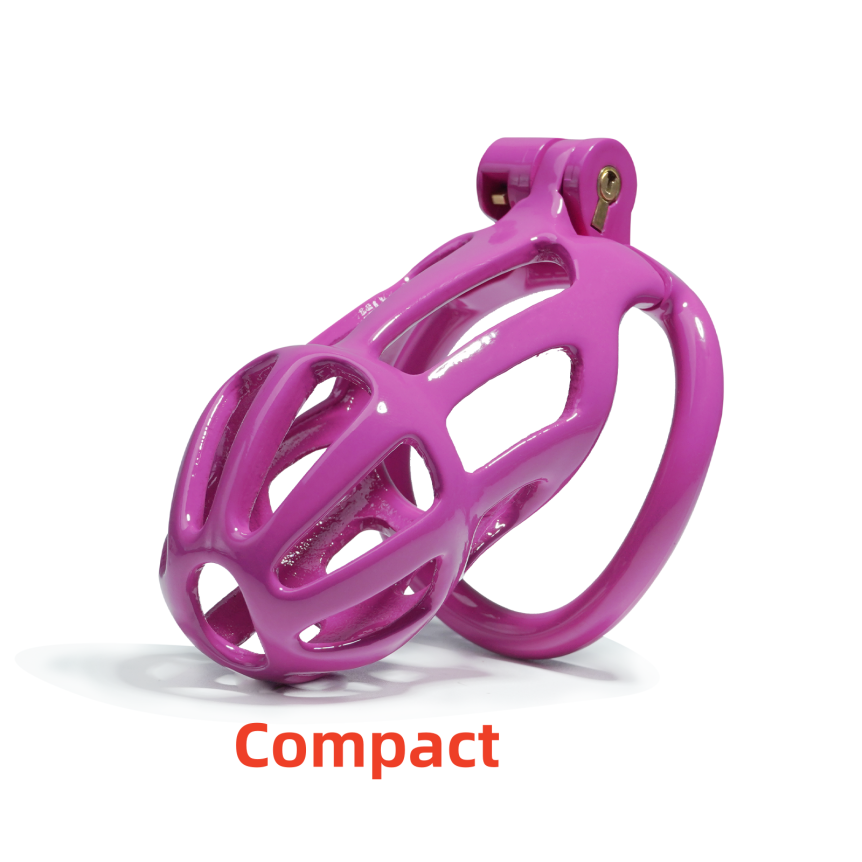Safe & Hygienic Chastity Cage Selection: The Complete Daily Wear Guide
2025-04-09
Choosing the right chastity cage for daily wear is essential for comfort, hygiene, and long-term health. Unlike occasional use, daily wear of a chastity device requires attention to materials, fit, and hygiene to avoid potential health risks, especially if exploring self-bondage or long-term chastity. Here's a comprehensive guide on selecting the right chastity cage.
Material Matters: Balancing Comfort & Hygiene
The material of your chastity cage is key to both comfort and hygiene. Below are the most common materials used:
-
Surgical-Grade Stainless Steel (316L): Widely considered the gold standard for hygiene, 316L stainless steel is hypoallergenic, easy to clean, and durable. It’s perfect for sensitive skin but can be heavier than other materials, so pairing it with a support strap might be necessary for comfort during extended wear, especially in self-bondage situations.
-
Medical Silicone: Lightweight and flexible, medical-grade silicone offers comfort but requires more frequent cleaning to avoid bacterial growth. It should be cleaned twice a day, and high-quality silicone is essential to prevent moisture and bacteria buildup. Silicone is often preferred by beginners for its gentleness on the skin.
-
Titanium: Titanium is lighter than stainless steel, offering comfort for long-term wear while being highly resistant to corrosion. It’s considered a premium material for those seeking durability without the weight of steel.
-
3D Printed Resin (e.g., for the Pink 3D Printed Male Chastity Cage): 3D printed cages, such as those made from resin, provide a lightweight option for chastity wear. The frosted texture enhances pleasure, and the ergonomic design ensures comfort for most users. Resin is non-toxic and gentle on the skin, making it suitable for beginners. However, it is important to maintain regular cleaning to prevent bacteria build-up.
Avoid Porous Materials:
Cheap plastics or 3D-printed resins may be tempting due to their affordability, but they tend to trap bacteria and develop unpleasant odors. They are also difficult to clean thoroughly, making them unsuitable for long-term use, especially in self-bondage.
Pro Tip:
Titanium and certain steel alloys are ideal for travelers as they won’t trigger metal detectors, offering a hassle-free experience during security checks.
The Fit That Works 24/7
A proper fit is crucial for comfort and health. An ill-fitting chastity cage can cause discomfort, circulation issues, and tissue damage. Here's how to ensure your cage fits appropriately:
-
Measure Twice, Wear Once: Accurate measurements are critical:
-
Flaccid Length: Measure while flaccid (take multiple readings for accuracy).
-
Base Circumference: Use a tailor's tape, not string, for a precise fit.
-
Testicular Gap: A gap between the device and body prevents discomfort like "ball burn."
-
-
Trial Periods Matter: Start with 2-4 hour sessions and gradually increase the time as you get used to wearing the cage. Be mindful of signs such as numbness, discomfort, or coldness, which may indicate poor circulation.
-
Adjustability is Key: Look for cages with adjustable features like multiple base ring sizes (typically 40-55mm) and interchangeable spacers. Some devices also offer curved rings for anatomical comfort.
Design Features for Real-Life Wear
Daily wear requires thoughtful design features that prioritize comfort and hygiene:
-
Ventilation: Choose a design with at least 30% open area to allow airflow and prevent moisture buildup, reducing the risk of bacterial growth, especially in self-bondage scenarios.
-
Urination: The cage should feature smooth, forward-facing holes to prevent sprayback and ensure comfortable urination without removing the device.
-
Edges: Ensure the cage’s edges are rounded and polished. Run a cotton ball along the edges to check for rough spots or snags that could cause chafing.
Security Without Compromise
A secure chastity cage should also prioritize comfort. Various lock types are available:
-
Brass Padlocks: Traditional and secure, but can rust over time. A durable finish can help minimize rust issues.
-
Integrated Barrel Locks: Discreet and less prone to rust but harder to clean due to their design.
-
Numbered Plastic Seals: Ideal for supervised wear but not as secure as traditional locks.
Pro Tip:
Keep an emergency key readily accessible. Some newer models offer magnetic quick-release locks for convenience in self-bondage scenarios.
Hygiene Protocol
Maintaining proper hygiene is essential to prevent infections and ensure comfort:
-
Daily:
-
Remove (if possible) and wash with pH-balanced soap.
-
Dry thoroughly with a lint-free cloth.
-
Apply a thin layer of coconut oil for moisture and antimicrobial protection.
-
-
Weekly:
-
Soak metal devices in 70% isopropyl alcohol to sterilize them.
-
Replace silicone devices every 3-6 months to prevent degradation.
-
Warning Signs to Look Out For:
-
Skin discoloration (white or blue)
-
Persistent redness or heat
-
Unusual odors that persist after cleaning
When to Consult a Professional
If you experience any of the following, seek medical advice:
-
Persistent swelling that doesn’t subside after removal.
-
Inability to remove the device in an emergency.
-
Recurring infections despite proper hygiene.
Final Recommendation
For beginners, a $50-$100 3D-printed chastity cage is an excellent starting point before upgrading to custom titanium models. Brands like Mature Metal and Rigid Chastity offer medical-grade options and provide sizing consultations to ensure a proper fit.
Remember, the best chastity cage is the one you forget you're wearing – until you’re reminded. Prioritize health, comfort, and cleanliness above all else to ensure a safe and hygienic experience.









